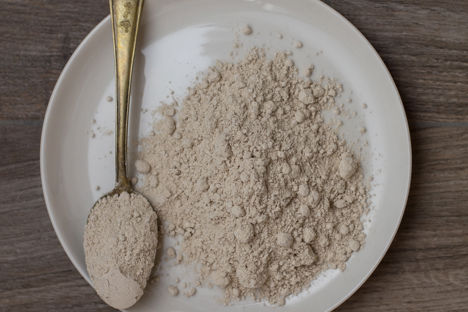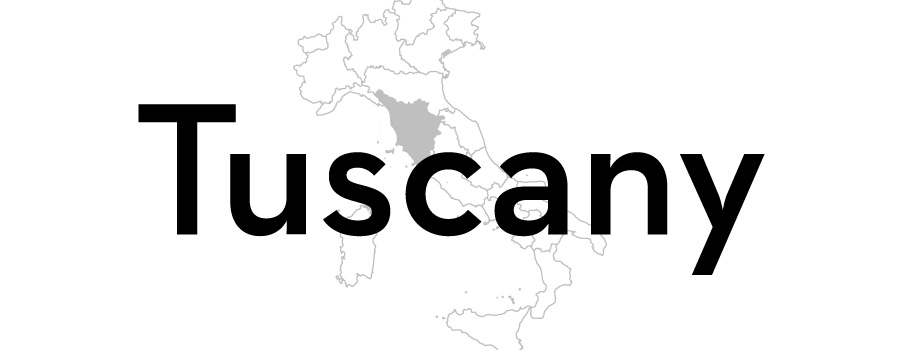
Chestnut flour: Tuscany’s secret ingredient
Giulia Scarpaleggia introduces us to chestnut flour, a simple seasonal ingredient that has endless uses, and some of the most famous Tuscan foods that make the most of its autumnal flavour.
Chestnut flour: Tuscany’s secret ingredient
Giulia Scarpaleggia introduces us to chestnut flour, a simple seasonal ingredient that has endless uses, and some of the most famous Tuscan foods that make the most of its autumnal flavour.
Today buying quality chestnut flour can be difficult, and it is certainly more expensive than it used to be. Yet it is one of the most fundamental ingredients of the cucina povera of the Tuscan mountains, from Garfagnana and Pistoia to Amiata and Mugello. In the years of famine and poverty, chestnuts have supported the local population with their high calorie content and versatility.
When the chestnuts become flour, they can be turned into polenta, porridge, bread, cakes, biscuits, fresh pasta and necci (a type of Tuscan crepe).
In autumn chestnuts are collected and dried for forty days in a little hut in the woods known as a metato, where the fire is fed with chestnut wood. Once dried, they are gradually ground into flour by millstones. The best time to buy the chestnut flour is therefore after the second half of November, when the new flour is finally available at market. The old mill Rossi in Fivizzano dates back to 1898 and today they are still considered the best at milling cereals and chestnuts as they still use a heavy, traditional millstone.
Chestnut flour has been known for centuries as farina dolce (sweet flour). Why? Put a pinch of chestnut flour on your tongue and let it melt. It is exactly like chewing into a sweet and dry chestnut.
Chestnut flour is the key ingredient of traditional recipes from Lunigiana, including Tuscan chestnut gnocchi boiled in milk; castagnaccio (a type of chestnut cake) and marocca, a dark bread made with chestnut flour. Today Marocca di Casola – a dense, spongy bread that teams up perfectly with ricotta, honey, anchovies, lardo di Colonnata or local pancetta – is a listed Slow Food product.
Here in Lunigiana the pasta is known as bastarda (bastard), as the wheat flour is cut with a percentage of chestnut flour. Locals make their typical lasagne sheets without egg and the flour is held together just with water. This pasta can be cooked as soon as they are rolled out and cut, or they can be left to dry near a stove until they are completely brittle. Then they can be kept in a paper bag for months, ready to be cooked and dressed in all sorts of ways. A cream and walnut sauce with Pecorino is my favourite dressing. Chestnut flour is used as a substitute for wheat flour to make gnocchi, seasoned with brown butter and sage to enhance the woody, autumnal taste.
Necci are thin pancakes with crisp edges, like simple crêpes made with chestnut flour and water, that are eaten plain or filled with sausage, pancetta or ricotta. They’re made in a very specific way – imagine a roaring fire and two flat cast-iron pans called testi. The thin batter of water and chestnut flour is pouredwith a ladle on a scorching pan, covered with the other hot pan and cooked for a few minutes over the fire. Traditionally the pans were greased with a piece of lard, but today cooks also use good olive oil. Once cooked, the necci are stacked, separated by chestnut leaves.
Even the mountain regions of Mugello and Amiata are famous producers of chestnut flour, which is used in many local recipes. In Piancastagnaio, on the Amiata mountain, you’ll find a rich chestnut polenta served with ammazzafegato, a local sausage whose name can be translated into liver killer… which is enough to explain how hearty this dish can be!
Last but not least, castagnaccio is probably the most representative recipe that is made with chestnut flour in Tuscany. It is a thin and crisp chestnut cake, an old sweet treat that tells of a time when poverty and hardship were resolved by housewives’ ingenuity. In its simplest version, it is enough to stir a handful of chestnut flour with water, olive oil and rosemary and bake it into a cake with a sharp, almost smoky flavour, with a thick texture similar to a bread pudding.
Talking about castagnaccio in Tuscany, however, might be a thorny issue, because each area uses different dried fruit or focuses on different nuances of flavours. Until recently, I always thought a combination of raisins and pine nuts was best, but now I prefer the castagnaccio of Garfagnana, where you can also find walnuts and the kick of orange zest, which adds a citrus note and turns the castagnaccio into a sweet treat with a typical Christmas flavour.



